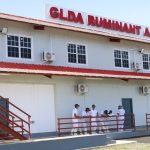Livestock agriculture has over the years made significant contributions to Guyana’s food and nutrition security, and has played an integral role in sustaining the livelihood of our livestock farmers, especially those in the rural communities.
Guyana is self-sufficient in pork, mutton, chevon, beef, fresh cow’s milk, duck meat, broiler meat, and table eggs. The demand for these commodities has been steadily increasing over the years. This is due in part to increases in disposable income and lifestyle changes by consumers.
As is the case with other agricultural activities, livestock production is subjected to the vagaries and challenges associated with climate change. Guyana’s position in the equatorial tropics, its location along the Atlantic seaboard and being under sea level present profound challenges to the way we domesticate our livestock and carry out our daily activities. High temperature, high levels of precipitation, high relative humidity, salt water intrusion, floods and droughts singly or collectively affects livestock production. This is mainly manifested in loss in productivity and devastation of livestock production systems. In this regards, quality and quantity of produce, reliability of production, i.e. quantity and quality of forage produced, water available for use by livestock, etc, and natural resource base, which sustain livestock production, can all be compromised.
Climate change exerts negative influence production parameters like growth (weight gain, market weight), reduction in quality and quantity of milk produced, reduced reproductive capacity (fewer and weaker animals), poor adaptation of livestock to environmental conditions and increases in the incidences and severity of disease and pests. These result in an overall decline in production, productivity and significant economic losses to farmers, farm families, communities and ultimately the country.
Therefore, the Government of Guyana (GOG) has put in place Climate Smart Agriculture Policies and introduced tested and proven interventions that will mitigate against the negative consequences associated with climate change. Such policies will allow for the building of a resilient and robust livestock sector. These interventions include, but not limited to the following: selection of breeds of livestock that will survive and thrive under our environmental conditions; develop and implement breeding calendar or seasonal breeding guidelines to avoid harsh environmental conditions; forage selection, based on eco-zone peculiarities; forage conservation (silage, hay); utilization of agri-byproducts or unwanted materials, specifically treated or untreated rice straw, waste from the poultry industry; composted poultry litter to feed ruminants; water harvesting; appropriate pen construction to minimize harmful effects associated with heat stress, and locating pens away from flood prone areas.
The primary objective of these interventions is to reduce the negative impacts climate change can have on livestock production while preserving Guyana’s food and nutrition security and food independence.
Prepared by: Michael Welch, BSc, MBA
Livestock Industry Development Specialist





